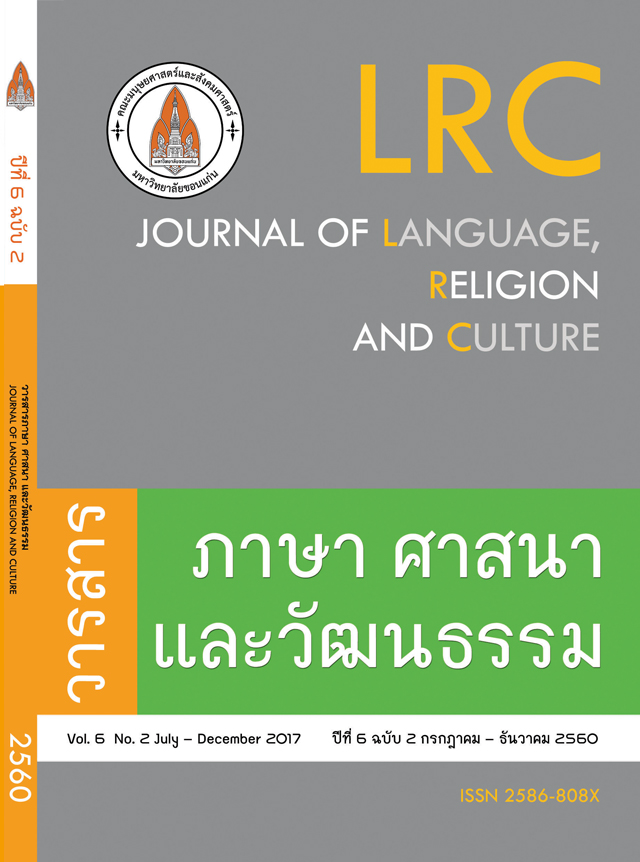รูปแบบการเผยแผ่พระพุทธศาสนาด้วยการเทศน์แหล่อีสาน; The Form of Buddhism Dissemination by ISAN Intonation Preaching
คำสำคัญ:
รูปแบบ, เผยแผ่, เทศน์แหล่อีสาน, Form, Dissemination, ISAN intonation preachingบทคัดย่อ
บทความนี้มีวัตถุประสงค์ เพื่อศึกษารูปแบบการเผยแผ่พระพุทธศาสนาด้วยการเทศน์แหล่อีสาน นำเสนอเอกลักษณ์ของการเผยแผ่พระพุทธศาสนาด้วยภูมิปัญญาท้องถิ่นอีสานซึ่งเรียกว่าการเทศน์แหล่อีสาน มีทำนองการเทศน์ 3 ทำนอง คือ 1) ทำนองกาเต้นก้อน 2) ทำนองลมพัดพร้าว 3) ทำนองช้างเทียมแม่ ซึ่งเป็นเอกลักษณ์ประจำท้องถิ่นในภาคอีสานเท่านั้น ส่วนเนื้อหาที่นำมาเทศน์นั้นก็จะเป็นเรื่องมหาชาติ นิทานธรรมบท วรรณกรรมท้องถิ่น แหล่กลอนคติธรรม และด้นกลอนสด ถึงแม้ว่าการเทศน์แหล่อีสานจะมีท่วงทำนองเสียงสูง เสียงต่ำทอดยาวเป็นจังหวะเหมือนการสวดสรภัญญะ แต่ก็ยังปฏิบัติตามหลักองค์ธรรมกถึก 5 ประการ คือ 1) แสดงธรรมไปตามลำดับ 2) แสดงธรรมมีเหตุผล 3) แสดงธรรมด้วยความเมตตา 4) แสดงธรรมไม่หวังสิ่งตอบแทน 5) แสดงธรรมไม่กระทบตนและผู้อื่น
Abstract
This article aims to study the Form of Buddhism dissemination by ISAN intonation preaching by presenting the identity of preaching Buddhism through Isan Forlk wisdom called intonation preaching in Isan style or Lae. There are three rhythm types of ISAN intonation preaching: Ka-ten-korn, lom-pad-phow, and chang-tiam-mia. These rhythms are the unique form of local preaching in ISAN. The contents of the preaching in the studied region included the great lives of the Buddha (mahājāti), Dhamma tales (dhammapada), local literatures, dhamma songs and unprepared stories. Even if ISAN intonation preaching has its high-low intonation like ‘Saraphanya’ chanting, it follows the five qualities of preachers (dhammadesaka-dhamma): 1) exposition is regulated and gradually advanced; 2) it has reasoning or refers to causality; 3) it is inspired by kindness; 4) it is not for worldly gain; and 5) it does not hurt oneself or others.







